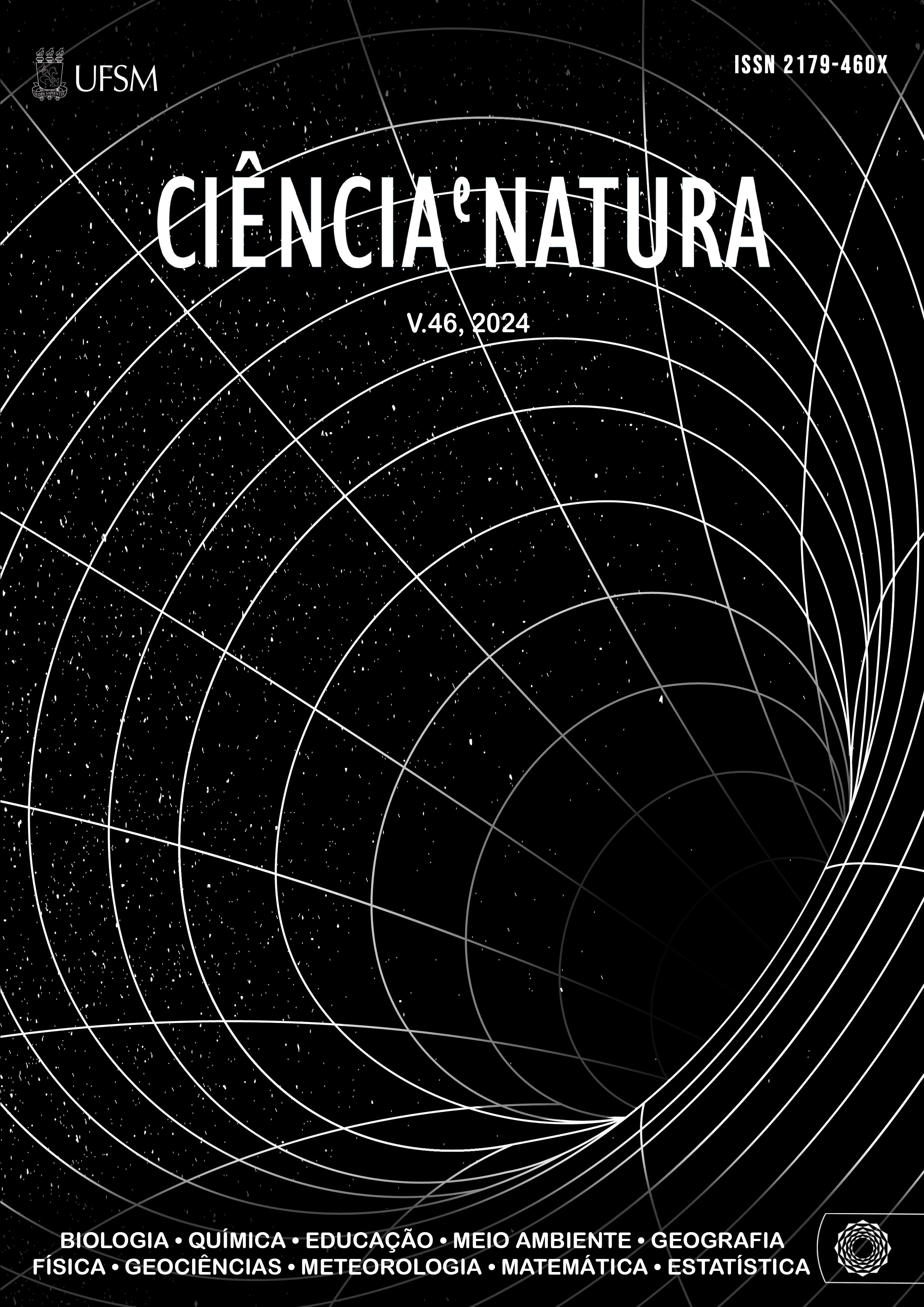Mathematical methods: an application in the agrarian Sciences
Keywords:
Break-even point, Fixed point, Modeling, Numerical methods, Metabolizable energy for maintenance, ZootechnyAbstract
This work presents a mathematical approach to a practical problem that originates from Zootecnia. Specifically, the theme is related to the study of the calculation of the nutritional requirements of energy for the maintenance of lambs of the Texel breed. The modeling process consists of obtaining a mathematical model from the adjustment of functions to the experimental data, so that it can perform the calculation of the fixed point of the function. O experimento foi realizado no Laboratório de Ovinocultura da Universidade Federal de Santa Maria (UFSM). One of the objectives of the research was to determine the requirement of Metabolizable Energy for Maintenance (EMm), which according to the methodology used by the researchers, is to obtain the point of balance of Heat Production (PC). In mathematical terms, the objective is to obtain the best curve fit for the experimental values using the linear least squares method and the equilibrium point by the fixed point iteration method. This work seeks to provide a theoretical contribution of the mathematical methods used in the modeling. The motivation of this study is to bring applied mathematics to areas of agrarian science.
Downloads
References
ARC, A. R. C. (1980). The nutrient requirements of ruminant livestock: technical review. 2. ed. Commonwealth Agricultural Bureaux.
Bassanezi, R. C. (2006). Temas e Modelos. S˜ao Paulo: LTC.
Boldrini, Costa, Figueiredo, & Wetzler (1984). Algebra Linear. S˜ao Paulo: Harbra.
Burden, R. L. & Faires, J. D. (2013). An´alise Num´erica. S˜ao Paulo: Cengage Learning.
Ferreira, W. M., Barbosa, S. B. P., Carrer, C. R. O., de Carvalho, F. F. R., & Filho, R. A. C. C. (2006). Zootecnia brasileira: Quarenta anos de hist´oria e reflex˜oes. Revista Acadˆemica: Ciˆencia animal, 4(3):77–93.
Franco, N. B. (2006). C´alculo Num´erico. S˜ao Paulo: Pearson Prentice Hall.
Frank, R. G., William, P. F., & Steven, B. H. (2014). A First Course in Mathematical Modeling. Cengage Learning.
Galvani, D. B. (2008). Exigˆencias e eficiˆencia de utilizac¸ ˜ao da energia e da prote´ına por cordeiros confinados. (Dissertação de Mestrado). Faculdade de Zootecnia, Universidade Federal de Santa Maria, Santa Maria, RS, Brasil.
Hefez, A. & Fernandez, C. S. (2016). Introdução `a ´Algebra Linear. Rio de Janeiro: SBM.
Martins, A. A. (2013). Exigˆencias Nutricionais de Energia e Prote´ına para Mantença e Ganho de Cordeiros Texel. (Tese de Mestrado). Faculdade de Zootecnia, Universidade Federal de Santa Maria, Santa Maria, RS, Brasil.
Martins, A. A. (2017). Exigˆencias de Energia, Prote´ına, C´alcio e F´osforo para Mantença e Ganho de Cordeiros Corriedale. Doutorado em zootecnia, Universidade Federal de Santa Maria, Santa Maria.
Moore, D. S., McCabe, G. P., & Craig, B. A. (2007). Introduction to the Practice of Statistics. Nova Iorque: W. H. Freeman and Company.
Ruggiero, M. A. G. & da Rocha Lopes, V. L. (2000). C´alculo Num´erico: Aspectos Te´oricos e Computacionais. S˜ao Paulo: Pearson Makron Books.
Schield, M. (1995). Correlation, determination and causality in introductory statistics. American Statistical Association, Section on Statistical Education.
UFSM (2017). ´Areas de atuação: ´Area de Nutrição e Alimentação. Recuperado de: http://www.zootecnia.ufsm.br/index.php/zootecnia/areas-de-atuacao.
Downloads
Published
How to Cite
Issue
Section
License
Copyright (c) 2024 Ciência e Natura

This work is licensed under a Creative Commons Attribution-NonCommercial-ShareAlike 4.0 International License.
To access the DECLARATION AND TRANSFER OF COPYRIGHT AUTHOR’S DECLARATION AND COPYRIGHT LICENSE click here.
Ethical Guidelines for Journal Publication
The Ciência e Natura journal is committed to ensuring ethics in publication and quality of articles.
Conformance to standards of ethical behavior is therefore expected of all parties involved: Authors, Editors, Reviewers, and the Publisher.
In particular,
Authors: Authors should present an objective discussion of the significance of research work as well as sufficient detail and references to permit others to replicate the experiments. Fraudulent or knowingly inaccurate statements constitute unethical behavior and are unacceptable. Review Articles should also be objective, comprehensive, and accurate accounts of the state of the art. The Authors should ensure that their work is entirely original works, and if the work and/or words of others have been used, this has been appropriately acknowledged. Plagiarism in all its forms constitutes unethical publishing behavior and is unacceptable. Submitting the same manuscript to more than one journal concurrently constitutes unethical publishing behavior and is unacceptable. Authors should not submit articles describing essentially the same research to more than one journal. The corresponding Author should ensure that there is a full consensus of all Co-authors in approving the final version of the paper and its submission for publication.
Editors: Editors should evaluate manuscripts exclusively on the basis of their academic merit. An Editor must not use unpublished information in the editor's own research without the express written consent of the Author. Editors should take reasonable responsive measures when ethical complaints have been presented concerning a submitted manuscript or published paper.
Reviewers: Any manuscripts received for review must be treated as confidential documents. Privileged information or ideas obtained through peer review must be kept confidential and not used for personal advantage. Reviewers should be conducted objectively, and observations should be formulated clearly with supporting arguments, so that Authors can use them for improving the paper. Any selected Reviewer who feels unqualified to review the research reported in a manuscript or knows that its prompt review will be impossible should notify the Editor and excuse himself from the review process. Reviewers should not consider manuscripts in which they have conflicts of interest resulting from competitive, collaborative, or other relationships or connections with any of the authors, companies, or institutions connected to the papers.






